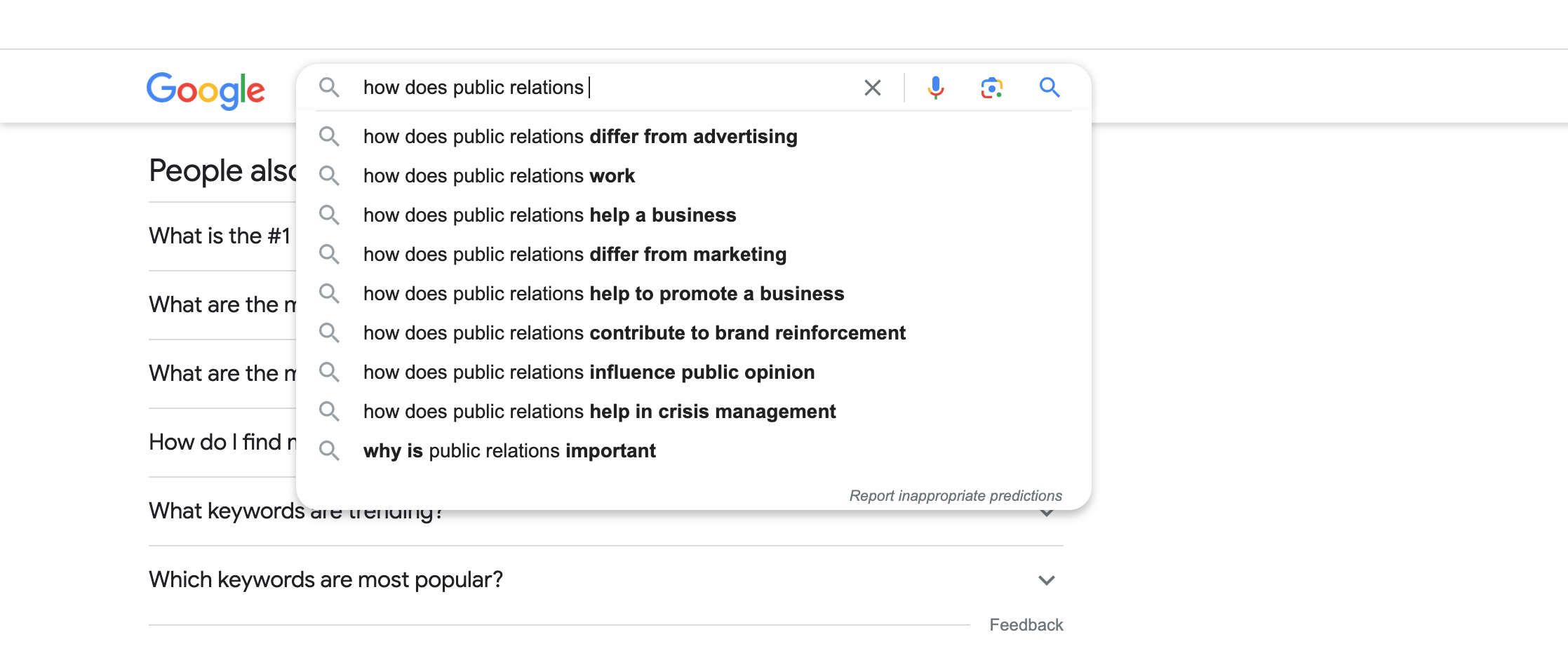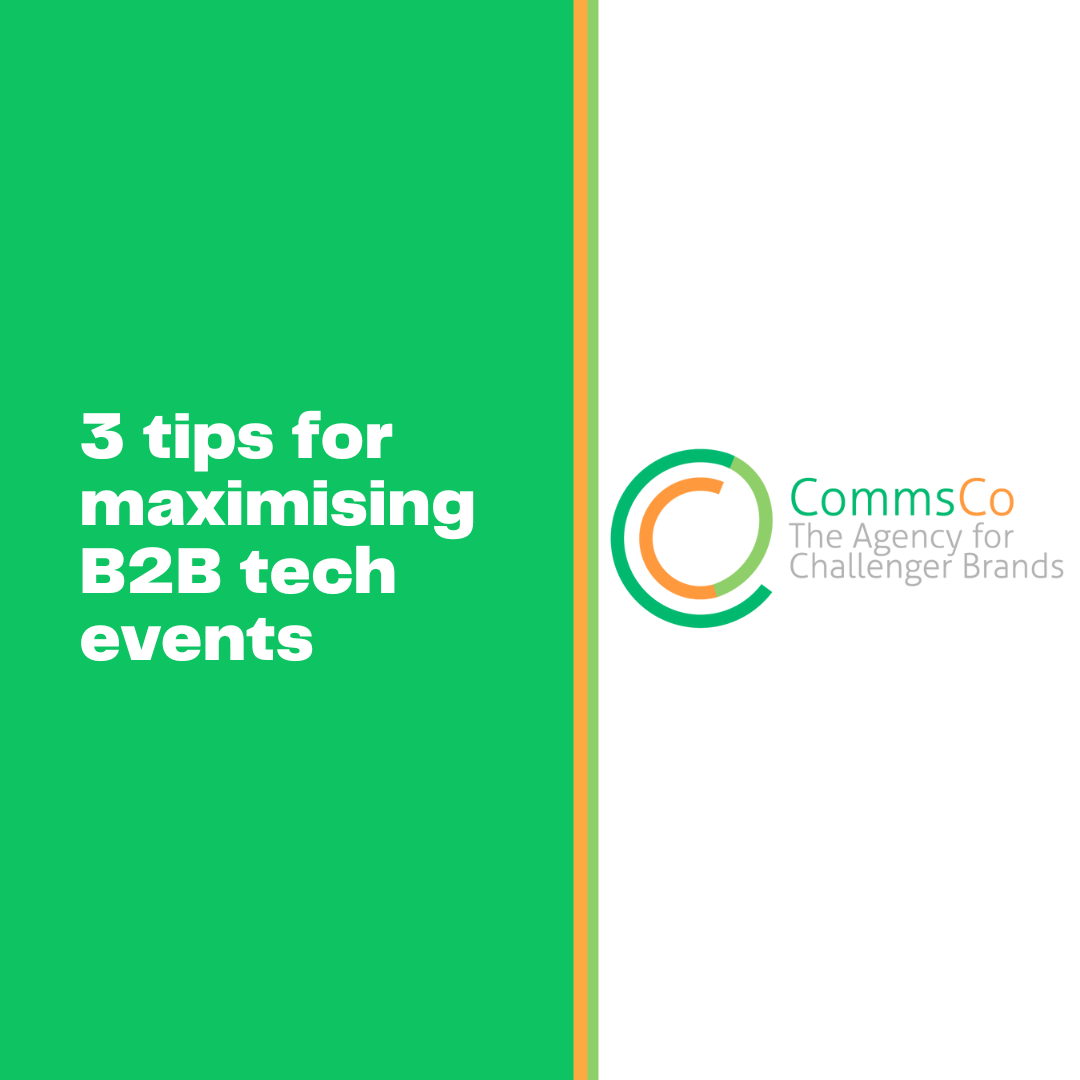Have a question that’s bugging you that you just have to Google? More likely than not, Google predicted the question before you had finished typing. This is due to autocomplete predictions.
As Google outlines, “autocomplete predictions reflect real searches that have been done on Google”, with the system looking for frequent queries alongside considering language, location, trending interests and your personal past searches.
Unlike celebrity gossip or the latest Netflix hit, it can be common for people not to know what PR is or how it works. So, using this feature, we decided to tackle some of the most popular Google searches on PR (noting these are also personalised to the user).
Our first part saw us answer questions on ‘How does PR…’ Next up, ‘What is a PR…’
1. What is a PR agency or company?
A PR agency, like ourselves, is an outsourced resource used to carry out a company’s PR needs and services. Rather than an in-house PR function, which usually comprises one or two people, a PR agency allows you to work with a whole team. This team is overseen by agency directors, with smaller teams formed by account managers and executives and further support provided by roles such as copywriters, content creators and consultants (inhouse or freelance).
The brilliant thing about an agency is that you can access far more expertise and resources at far less cost. And the agency itself can outsource any talent needed to support bespoke client needs. What does the agency do? The PR team is set up to work with clients to build brand awareness. It acts as an extension to your internal team(s) and becomes responsible for relationships with the media, creating news and content, and dealing with any press enquiries.
2. What is a PR campaign and strategy?
A PR campaign employs a range of promotional tactics and assets to achieve a specific business goal(s), such as promoting a product or cause, driving inbound traffic, or raising overall brand awareness. It uses a variety of channels to cut through the noise and generate fresh awareness in a given timeframe.
A campaign could just involve placing news and articles with the media and securing interview opportunities. Or it can be built up using an array of further channels like podcasts, social media, events, stunts, blogs and website content. It brings all of these various factions together under the same campaign umbrella.
A PR strategy is the ongoing and overall PR machine which campaigns fall under. For example, several campaigns for the year can be planned as part of the PR strategy, and each could involve using different channels and tactics. While campaigns offer bursts of activity, the PR strategy keeps the machine ticking away and generating consistent output.
3. What is a PR pitch?
“What’s your elevator pitch? Go.” How many times have you been asked that? Not even just in the world of business, but out in social situations. How do you grab attention and interest in your idea?
Journalists receive a dizzying influx of hundreds of emails a day. A PR pitch, just like pitching a business idea, aims to draw a journalist’s (or a similar party’s) attention to your news, commentary, interview and content ideas. This can be written or verbal.
The modern world and its sheer volume of content is making it harder to pitch effectively. That is why it is so important for PRs to cultivate relationships with the media and anyone and everyone who may be relevant. But a captivating pitch could just spark the start of one.
4. What is a PR stunt?
Earlier this year, I asked, ‘In a world of strikes and social media, what makes a PR stunt?’ As defined in the blog, “The nucleus of a PR stunt, from the various definitions floating around, centres on a planned event or performance aimed to ‘attract attention to a person, brand and/or their cause’”.
This could be employees donning morph suits and filling up washing machines with ‘dirty cash’ outside the Bank of England to expose the masked world of money laundering. Or it might be a giant Yayoi Kusama sculpture protruding above the rooftops of Louis Vuitton stores which have been smothered in colourful polka dots.
But stunts don’t just have to be physical. Social media can be the perfect environment to carry out the virtual stunts, with brands grabbing attention with fake campaigns, content and ‘feuds’ with other brands. Who can forget the infamous Colin the Caterpillar fiasco? And, as expressed in the blog, a stunt might not even be intentional, but emerge as a result of an eye-grabbing activity within overall PR output.
Stay tuned for more answers to popular Google search terms.
Related Articles



